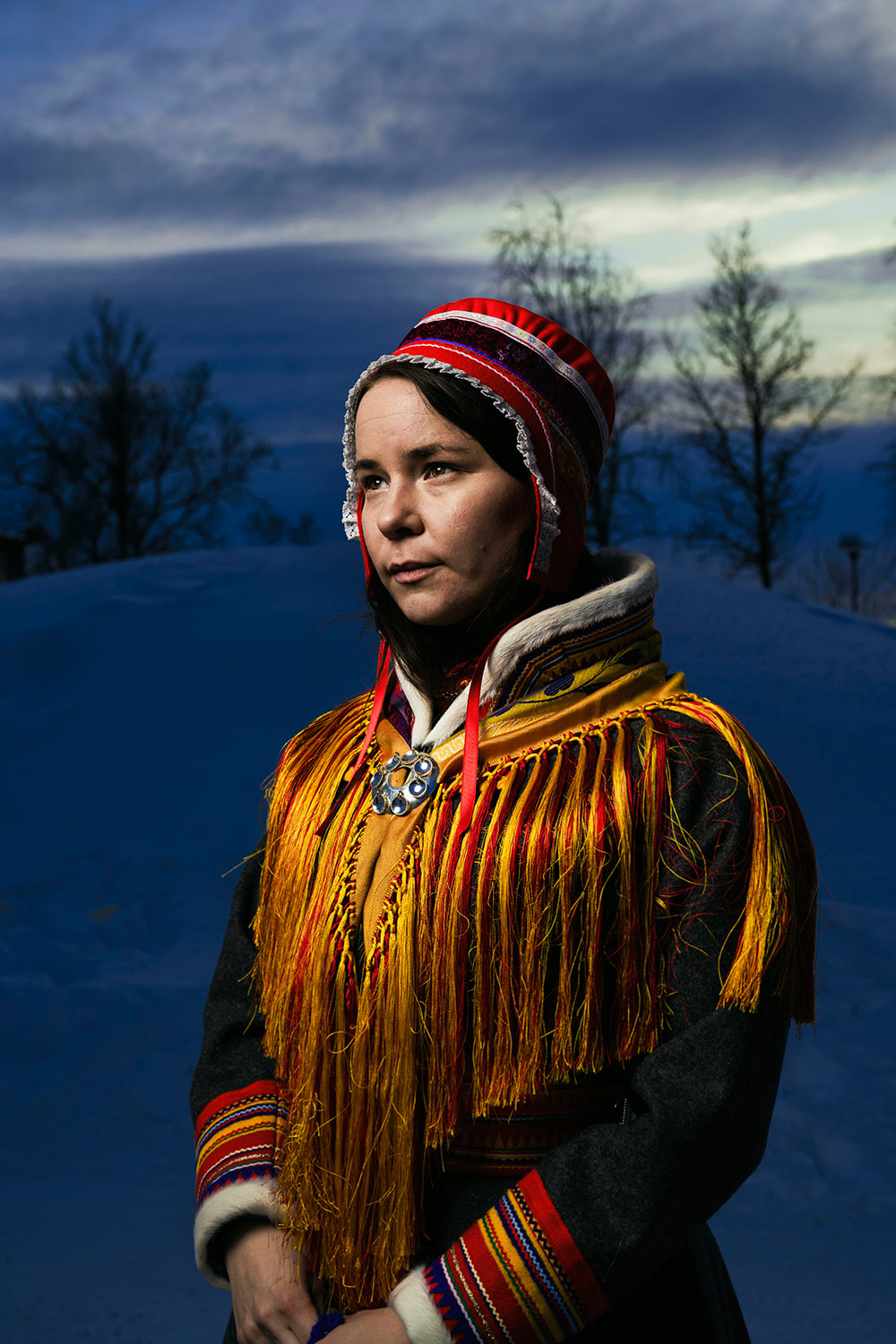Philippe Echaroux contests climate change through striking portraits
Philippe Echaroux is a photographer who uses his art to denounce the consequences of deforestation and the dangers of climate change. In partnership with Canal+ , Philippe embarked on a journey to Lapland, aiming to highlight the impact of climate change on the local inhabitants in the heart of January.
During this trip, Philippe faced the challenge of finding suitable equipment to capture pictures in extremely low temperatures, sometimes dropping as far as -35 degrees Celsius.
Join him as he shares his remarkable experience.
Undertaking an artistic project always presents its own set of challenges, and this adventure posed a double challenge for me. On the one hand, we had our own expectations to contend with, while on the other hand, the audience always expects us to demonstrate tangible results.
As a photographer, our objective is to convey the emotions experienced on location through our images, and to share those emotions with all who view our photos, whoever they may be.
Throughout this project, I found myself capturing portraits facing a camera, which proved to be a tremendous challenge. I had to consider both my subject and the surrounding environment while remaining focused on the spectators present and the ongoing filming of the documentary.
If I were to solely concentrate on my own photograph, I would lose the connection with the viewer, contradicting the very purpose of conveying emotions and reflections through my work, while also sharing the encounters and struggles of the individuals we discover in the film.
The light in Lapland in January is extraordinary, a sort of everlasting sunset with a lingering rosy hue that persists for hours—a true dream for photographers. However, the temperature fluctuates between -35 and -15 degrees Celsius, if we’re fortunate, and this factor can swiftly transform an idyllic moment into a real nightmare.
“As a photographer, our objective is to convey the emotions experienced on location through our images, and to share those emotions with all who view our photos”

There is a constant uncertainty in this type of project. While it provides an opportunity to form meaningful connections and experience intense emotions, it also entails significant technical and human challenges.
I had never really encountered such extreme cold before, and I had little knowledge of its impact on both myself and my equipment. To give you an idea, the liquid crystals in my camera’s viewfinder began malfunctioning after a few minutes, and some never returned to normal. My phone also suffered, although it fared better, luckily.
Another major challenge, which can be detrimental to equipment, is condensation. In such conditions, you cannot quickly escape into the warmth, as it would be akin to submerging your gear in a lake. We had to create zones of heat transition, from the car boot to the patio, and then to the entrance, and so on. Everything becomes more complicated, more extreme in such circumstances, but the landscapes and encounters make it all worthwhile.


“The Elinchrom FIVE is an incredibly powerful flash […]. Additionally, its extended battery life gave me more confidence“
I have worked with Elinchrom equipment from the very beginning, and it has been one of my most faithful travel companions. For this particular adventure, I opted to use the brand new Elinchrom FIVE, primarily for two reasons. During a shoot, portrait sessions are fast-paced and improvised. There’s no comfortable studio or sophisticated screen for retouching. We had to photograph people wherever we met them, regardless of weather and lighting conditions.
The Elinchrom FIVE is an incredibly powerful flash, providing me with valuable options when improvising a portrait. With this, I can enhance a backlight scene or illuminate a person and their broader surroundings, if necessary. Additionally, its extended battery life gave me more confidence, as the cold quickly drains batteries, as I discovered.


There have been times when I had to hold the flash with my left hand while holding the camera with the other hand. This poses a challenge due to the weight of the equipment, but this slight discomfort forces me to work extremely quickly, making the shot instinctive. It is truly ingrained in my portraitist DNA to let the moment unfold without overthinking, to instinctively experience the moment without really knowing what the result will be.
When it comes to lighting, it was essential for me to travel light. For almost all of my portraits, I use the Rotalux Square Softbox 70cm (27″) due to its convenience when travelling. It’s ideal for close-up portraits, but when combined with the power of the Elinchrom FIVE, it also allows me to illuminate a wider area while keeping the subject as the focal point of the light stream. In my opinion, it’s an indispensable combination.



Ultimately, it’s precisely because of these challenges that the adventure becomes so magical. Being at the heart of a television program is a unique, yet enriching experience, but above all, it is an ideal way to share my art and art in general with the broader public. Despite a few initial mishaps and numb toes, we persisted, as did the equipment. My iPhone experienced a few hiccups, but the Elinchrom FIVE, on the other hand, remained reliable, which is reassuring. However, I expected nothing less of the products from my Swiss friends who have been with me since the beginning of this wonderful journey.
Philippe’s favorite kit

Elinchrom FIVE
The FIVE is a battery monolight with 522Ws of power, allowing you to work on location with up to 450 full-power flashes. The Elinchrom FIVE features TTL, HSS, a bi-color LED modeling light, and a removable battery.

Rotalux Softbox
Available in 12 different shapes and sizes, the Elinchrom Rotalux Softbox will quickly become your main light shaper whether you’re in a studio or on location.

Elinchrom ONE
A portable and dependable off-camera flash equipped for your next adventure. 131Ws of power including a sealed Li-ion battery, TTL, HSS, bi-color LED and a touch interface.




